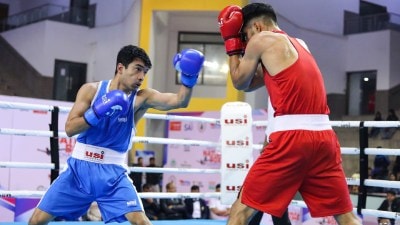Uncertainty continues in Pakistan over who will form the next government, three days after its elections. While the polls seemed pretty much set to favour Nawaz Sharif-led Pakistan Muslim League-N (PML-N), which had the backing of the military, voting threw up a surprise, and the final tally — released after much delay amid accusations of rigging — saw independent candidates secure the maximum of 101 seats. Most of these independents are backed by Imran Khan’s Pakistan Tehreek-e-Insaf (PTI), as they were barred from contesting on the party’s symbol by the Election Commission.
The PML-N came second with 75 seats, and the Pakistan People’s Party (PPP) led by Bilawal Bhutto-Zardari stood third with 54 seats. One result has been withheld and another vote was postponed because of a candidate’s death, reported AP.

No bloc is in the position to form a government and the high number of independents has created an unprecedented situation.
How do National Assembly numbers stack up?
Pakistan’s National Assembly consists of 336 seats. As many as 266 members are elected through direct voting, while 70 seats are reserved — 60 for women and 10 for non-Muslims. PML-N and PPP have run a coalition government before this, but even if they join hands this time, they won’t reach the halfway mark.
The reserved seats present an added complication, as they are filled on the basis of each party’s numerical strength in the Assembly, but this time, the highest number is that of independents.
What are the rules for independents?
Under Rule 92(6) of Pakistan’s election regulations, once their win is announced, independent candidates have three days to join a political party. The independent candidate has to apply to the head of the political party, who then informs the Election Commission.
The independents can also choose to band together under a name.
Story continues below this ad
How are reserved seats filled?
The reservation for women and non-Muslims flows from Article 51(2A) of Pakistan’s Constitution. Political parties can fill these 70 seats in proportion to their winning candidates. Among women, the 60 seats are divided as: 32 for Punjab, 14 for Sindh, 10 for Khyber Pakhtunkhwa, and four for Balochistan. The 10 non-Muslim candidates are not sub-divided among provinces.
“All political parties submit a list of their choice of candidates for reserved seats at the time of filing nominations, and this list undergoes the Election Commission’s scrutiny. After the results, the party with the highest number of winning representatives will see the highest number of reserved candidates from their list get elected,” explained Yaqoob Khan Bangash, Pakistani author and fellow, at Harvard University’s South Asia Institute.
If the PTI-backed independent candidates join any political party, they will then get to fill the reserved seats based on their combined strength. “While in 2013, the PMLN was allowed to add names to its already submitted list for women reserved seats, the situation under the prevailing 2017 Elections Act is complicated, where article 104 (1) seems to prohibit the addition of new names after elections, while 104 (4) potentially allows some change. To get any reserved seats then, the PTI would need to get judicial intervention,” Bangash said.
So what are the PTI-backed independents likely to do?
Story continues below this ad
There’s no clarity. PTI as of now is staging protests, alleging its actual tally is higher and the poll results have been rigged. It has also filed a number of petitions in court, alleging election malpractices.
There’s a possibility that some of the 101 winners will join hands with parties opposed to the PTI and be part of the government. However, this is likely to vary according to provinces — while in Punjab, such a crossover might be easier, in Khyber Pakhtunkhwa, which PTI-backed candidates swept, such defection might not be forgiven by voters.
Is there any precedent to such a high number of independents?
There is and there isn’t. In the 1985 elections, no political party was permitted to participate, and thus every candidate, though with party allegiance and backing, had contested in his or her individual name. It was only the elected representatives who were allowed to form political parties, after the elections.
Story continues below this ad
This time, while the PTI candidates fought as independents, others contested under the name and symbol of their parties.








































